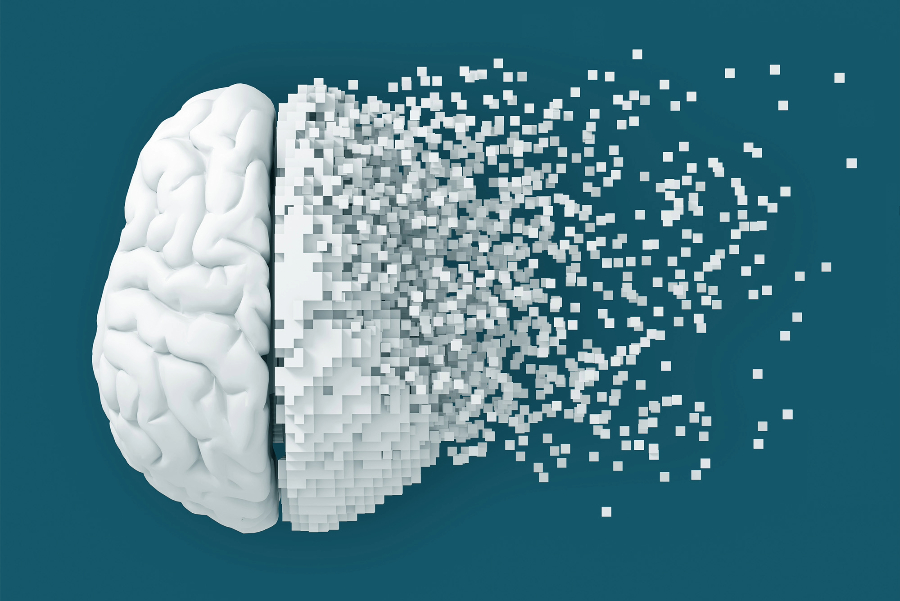Unraveling the links between Alzheimer’s Disease and Diabetes
Alzheimer’s disease (or dementia) is a type of neurological disorder that occurs in the brain. With this disease, the brain shrinks and the brain cells die. This results in a decline in thinking, behavior, and social skills, thereby affecting the ability to function independently. The disease especially affects the elderly.
An estimated 6 million people age 65 and older are living with Alzheimer’s disease in the United States alone. Of the approximately 50 million people worldwide, it is estimated that 60% to 70% have Alzheimer’s disease. According to a 2010 study, about 3.7 million Indians are affected by the disease, and this number is expected to rise to 7.6 million by 2030.
The disease was first diagnosed in 1906 by the German psychiatrist Alois Alzheimer. He discovered the disease in the embryo of a patient during an autopsy. He found that the brain had excessive cell contractions and neuron problems. After that, it became known to the outside world. To date, no cure has been found for this disease.
How is it formed?
Amyloid aggregates are caused by a specific peptide bond or a change in the structure of the molecules in the protein in our body. This accumulation creates the appearance of amyloid fibrils. These amyloid fibers have been linked to about 20 diseases. Alzheimer’s disease (AD), Parkinson’s disease (PD), Huntington’s disease, diabetes, and cataracts are caused by this. Alzheimer’s disease is one of them.
A protein called amyloid-beta (Beta-amyloid) causes this disease. Amyloid-beta protein accumulates in the centers of the brain and forms plaques. This amyloid blocks damage to the synapses between neurons. It also blocks chemical signals (neurotransmitters) from reaching receptors on neurons. Once the disease begins, the nerve cells begin to die. Subsequently, memory loss and other cognitive impairments occur, shrinking the areas of the brain involved in memory (Hippocampus) and higher-level brain functions (Cortex) and eventually death.
Due to high stress, (Oxidative stress) beta-amyloid fibers also cause more damage to the mitochondria in human cells. Also, deficiency of essential nutrients such as iron, copper, and zinc causes this disease. Apart from this, research results suggest that the disease is also caused by genetic defects, head injuries, air pollution, and lifestyle changes. As women generally live longer than men, the number of women suffering from this disease is higher.
Besides memory loss, indications such as difficulty completing normal tasks, difficulty solving problems, withdrawal from friends and family, communication problems, and difficulty recognizing places and people can also confirm the disease.
The link between diabetes and Alzheimer’s disease:
Diabetes Mellitus or Diabetes Mellitus is a type of chronic metabolic disease prevalent in India. This disease can be divided into three types. Type 1, Type 2, and Gestational diabetes. About 77 million people in India are suffering from diabetes. India is second only to China in diabetes in the world. However, some epidemiological studies have found a direct link between diabetes and Alzheimer’s disease. According to recent study results, the symptoms of Alzheimer’s disease affect people with diabetes more than other healthy people.
Diabetes occurs due to a deficiency in insulin hormone production. If insulin is secreted in excess, it directly increases the growth of beta-amyloid proteins. This causes amyloid plaques to form and cause Alzheimer’s disease. The hormone insulin plays an important role in regulating glucose metabolism in the embryo. These changes in insulin production can lead to cognitive decline, changes in germ cells, and greater effects on learning and memory. As amyloid proteins grow with this insulin and Alzheimer’s disease appears, this can be called “Type-3 diabetes”.
Similarly, even if cholesterol levels are high in the blood, it is still possible to acquire Alzheimer’s disease in the future due to the gradual breakdown of fatty acids.
Prevention methods
There is a high probability that the disease will eventually pose a significant risk to developing countries. There is currently no medication or vaccination that has been discovered that can cure the condition. On the other hand, there are ways to prevent the occurrence of this condition by adopting healthy lifestyles, developing healthy habits, and engaging in physical activity.
This condition can be prevented by engaging in mood-enhancing exercises, engaging in regular exercise, eating a nutritious diet that is low in fat, quitting smoking and drinking, and being aware of the ailment.
Source
- https://www.frontiersin.org/articles/10.3389/fnins.2023.1233601/full#:~:text=Introduction%3A%20Observational%20studies%20suggested%20that,has%20not%20been%20fully%20elucidated.
- https://www.cdc.gov/aging/aginginfo/alzheimers.htm#:~:text=Alzheimer’s%20disease%20is%20the%20most,thought%2C%20memory%2C%20and%20language.
- https://www.ncbi.nlm.nih.gov/pmc/articles/PMC2634529/#:~:text=Amyloid%20refers%20to%20the%20abnormal,dominated%20by%20%CE%B2%2Dsheet%20structure.

